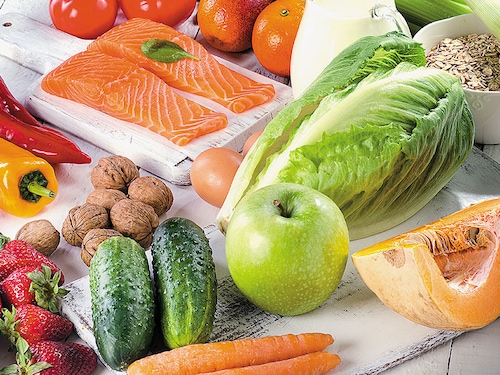Burn after eating: How the right food can help shed calories
Eating does not always have to be about adding to body fat


Image: Shutterstock
Fat is what motivates us to go on a diet, eat less and workout more. Even in the absence of physical activity, body fat is burnt as fuel for various processes and functions. The key influences for burning fat as fuel are weight, physical activities, health of the endocrine and exocrine glands, and the nature of food consumed. Of all these, food plays the most vital role in determining whether the fat is burnt or stored.The ‘thermic value’ of food is the energy used by the body’s digestive system to break down food molecules into basic constituents. The longer it takes for the digestive system to break down the food, absorb the nutrients and clear the waste from the intestinal tract, the higher is the food’s thermic value. Food comprises one or more of three macronutrients: Carbohydrates, proteins and fats. Naturally protein-rich food has the maximum thermic value, followed by dietary fibre, carbohydrates other than fibre, and fats. Consuming food that is rich in complex molecules can contribute to fat-burn by boosting the basal metabolic rate (BMR).
Carbohydrates consumed on a regular basis can be broadly classified into starch, sugar and fibre. Of these, dietary fibre has the maximum thermic value, and health and fat-loss benefits. Since the digestive system is incapable of breaking down dietary fibre into its constituents (different sugars), it does not give any energy input to the body instead, it consumes energy. Dietary fibre also helps in healthy bowel movement, and supports the growth of healthy gut bacteria. Hence, fibre consumption has two benefits: It burns body fat and reduces calorie input. The consumption of fibre, however, should not exceed 30 gram per day excessive consumption could lead to impaired absorption of minerals.Protein, which comprises amino acids, has a two-fold fat-burn benefit: First is the short-term benefit of having maximum thermic value second, in the long-term, the amino acid are used by the body to build and maintain energy-expending hormones, enzymes, organs and skeletal tissues.
One kilocalorie (Kcal) is a single unit of energy received from food intake. One gram of protein and carbohydrates provides 4 Kcal of energy, while 1 gram of fat and alcohol provides 9 Kcal and 7 Kcal of energy respectively. To induce maximum thermogenesis, a meal should ideally comprise 30 percent of kilocalories from protein, 20 percent of kilocalories from fibrous carbohydrates, and around 50 percent of kilocalorie from fats.
Therefore, when you eat, instead of believing that it will only add to the total calorie intake and body fat, be aware that with the right selection, you can end up burning more calories than adding calories.
The writer is founder and CEO of 48 Fitness
First Published: Mar 16, 2018, 17:51
Subscribe Now
